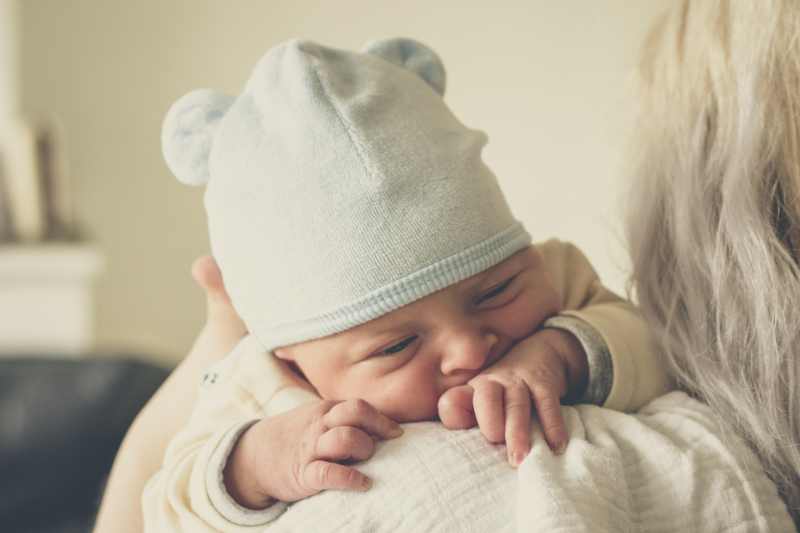Dogs and babies, conjure up cute and cuddly images. However, if you don’t introduce a dog to your baby in the right way, it could be a disaster. For either, or both!
Bringing your new baby home to meet your dog is exciting, but also nerve-wracking. As a parent, there is nothing quite as special as watching the bond and love between your pet and baby grow.
It is so important to know how to do this safely, for both your dog and baby.
Preparing For Baby’s Arrival
You have 9 months to prepare for your new bubba. There are SO many things to organize, nursery, clothing. But keep in mind, one of the most important things is to get your dog prepared for the new arrival!
Make sure your dog considers you the pack leader. Being seen as the pack leader is essential for all aspects of dog training, but is especially beneficial when introducing a new pack member.
How to Introduce a Dog to Your Baby
Start by
Before your baby comes home make sure your dog has been well-exercised. This burns off any extra energy and releases endorphins, hopefully making your dog chilled out by the time you get home!
When the time comes to introduce your dog to your baby try to ensure that your baby is settled and calm – either sleeping or having just been feed – as an unsettled screaming baby will unsettle your dog, and may not end well.
Enter the room holding your baby. Stand for a few moments and carefully watch your dog’s

Remember: Your dog will reflect your behaviour and feed off your energy. Remain calm and speak in slow, hushed tones, avoid using a high-pitched or excited voice.
If your dog begins to jump or become over excited, turn your back to them. You may need to have another adult place them on a lead.
If they are calm and relaxed you can slowly sit down. Watch your dog’s behavior closely. Make sure you are ready to move your baby away quickly if needed and another adult is present to restrain your dog if required.
Allow your dog to come over to your baby in their own time and sniff your baby.
There is no rush to do the introduction. If you feel that your dog is overwhelmed, cease the introduction and begin again later in the day or the next day. A gentle, slow introduction is far better than a rushed one. Patience is a virtue, especially when it comes to dog training!
Safety with Dogs
If you have had your dog for a while you should have a good idea of how it will respond to your baby by how they have behaved around other babies, children, adults, and even other dogs. Therefore, with a little preparation, introducing your baby to your dog should be fairly straight forward.
However, safety with your dog and baby is essential at all times, not just the first few weeks!
Things to keep in mind are :
- Never leave your child and dog unattended together
- Don’t allow your child to take food off your dog
Until you can be absolutely sure that your dog is safe to be alone with your baby, set some clear boundaries around the nursery. Depending on your dog, this barrier can be either physical or invisible. Either way you dog needs to understand that the nursery is a no go area.
As time passes and your dog shows no sign of aggression towards your baby then you can introduce them to the nursery. With your supervision, let them sniff around the room, get familiar with all the different smells.
You will also need to watch and observe your dog’s reaction when your baby cries. Do they become agitated, frightened, or anxious. If so then reassure your dog that everything is okay. Remember, your dog will be watching your reaction as well.
It is also very important to teach your dog that the babies toys are not their toys (and visa
As your baby grows it is important to teach them how to behave towards the dog. They will need to be taught not to pull on the dog’s tail or fur and to not hit the dog. You will need to supervise all early interactions between your baby and your dog.
Over time, with adequate supervision, they will learn mutual respect for each other and cohabitate together without incident. However…
Your Baby or The Dog
Sometimes, no matter how hard you have prepared it just doesn’t work out. It doesn’t happen often, but it does happen, so you need to be prepared that you may need to decide, the baby or the dog!
Jokes aside, you may need to find another home for your dog to ensure the safety of your baby. Or the health of your dog.
Some dogs never quite adjust to a new addition to the “Pack.” They can become aggressive not only to the baby but others as well. Or, they may become very anxious or exhibit signs of separation disorder.
The safety of your baby, your household and others must come first.
We hope that you found this article useful and we are interested to hear from you if you have had experience introducing a dog to your baby. How did it go?
Recent Posts
10 Wholesome Human Foods Your Dog Will Love: Safe and Healthy Treats
As a devoted dog owner, you know that sharing is caring. And what better way to bond with your furry companion than by indulging in some delightful human foods together? But hold your horses (or...
Unleashing the Power of Counter Conditioning: Transform Your Dog's Behavior
Have you ever noticed your furry friend freaking out at the sight of a vacuum cleaner, trembling during thunderstorms, or maybe getting a tad too vocal around other dogs? If you're nodding along,...

